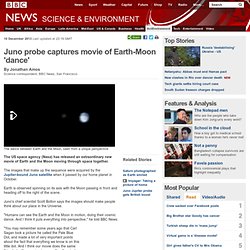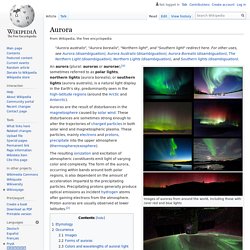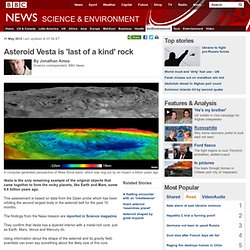

'Most distant' Solar System object spied. Image copyright NASA/JPL-CALTECH/R.HURT Astronomers have identified the most distant object yet in the Solar System.

Observations with Japan's Subaru telescope reveal the likely icy body to be some 15.5 billion km from the Sun - about three times further away than even far-flung Pluto. Scientists say their initial studies suggest that the object - catalogued as V774104 - is some 500-1,000km across. Alien star system buzzed the Sun. An alien star passed through our Solar System just 70,000 years ago, astronomers have discovered.

No other star is known to have approached this close to us. An international team of researchers says it came five times closer than our current nearest neighbour - Proxima Centauri. Dwarf planet Makemake examined for the first time. 21 November 2012Last updated at 13:01 ET An artist's impression shows the rocky world, distant from the Sun and lacking any obvious atmosphere Astronomers have obtained an important first look at the dwarf planet Makemake - finding it has no atmosphere.

One of five such dwarfs in our Solar System including former planet Pluto, Makemake had until now eluded study. But in April 2011, it passed between the Earth and a distant star, and astronomers used seven telescopes to study how the star's light was changed. A report in Nature outlines how they unpicked Makemake's size, lack of atmosphere, and even its density. Voyager probe 'leaves Solar System' 12 September 2013Last updated at 14:00 ET By Jonathan Amos Science correspondent, BBC News Voyager will live out its days circling the centre of our Milky Way Galaxy.

Voyager surfs Solar System's edge. "It could be any day, but it could also be several more years.

" Ed Stone cannot say when the Voyager-1 spacecraft will leave the Solar System, but he believes the moment is close. The latest data from this extraordinary probe, reported in this week's Science journal, suggests it is surfing right on the very edge of our Sun's domain. The particles streaming away from our star have reduced to a trickle at its present location, 18.5 billion km from Earth. Particles flying towards it from interstellar space, by contrast, have jumped markedly in the past year.
Juno probe captures movie of Earth-Moon 'dance' 10 December 2013Last updated at 23:19 GMT By Jonathan Amos Science correspondent, BBC News, San Francisco.

Viewpoint: Saturn snapped as Earth smiled. The US space agency (Nasa) has released a spectacular new picture of the Planet Saturn, acquired by the Cassini spacecraft in July. The image was produced as part of The Day The Earth Smiled Project, which was led by Dr Carolyn Porco. She describes how and why the picture was put together. Four months ago, our cameras on Cassini were commanded to execute a routine imaging sequence during an event that was anything but routine. On 19 July, an array of overlapping images framing Saturn, its entire ring system and a host of its moons was acquired while Cassini was deep in the shadow created by the planet's eclipse of the Sun. This arrangement of Sun, Saturn, and machine made for a rare opportunity to image from the outer Solar System the planets in close to the Sun.
The intent: To catch a precious glimpse of our own planet - tiny, remote, alone - as it would be seen from a billion miles away. Images of this nature had been taken before. Birth of the Moon: a runaway nuclear reaction? Spectacular force: A georeactor deep in the ancient Earth's D''-layer (dark orange layer near core) goes supercritical - suddenly increasing temperatures to 13,000ºC.

This turns rock into vapour, creating a rising bubble which pushes mantle, crust and atmosphere into space in a giant eruption. Credit: Theo Barten IT HAPPENED 4.5 BILLION YEARS AGO, when the Earth was barely 50 million years old. Life didn’t exist; the planet was a violent, boiling fireball. Then, without warning, the unimaginable happened. Aurora (astronomy) Natural light display that occurs in the sky, primarily at high latitudes (near the Arctic and Antarctic) Images of auroras from around the world, including those with rarer red and blue lights Aurora australis from the ISS, 2017.

Video of this encounter: [2] An aurora (plural: auroras or aurorae),[a] sometimes referred to as polar lights, northern lights (aurora borealis), or southern lights (aurora australis), is a natural light display in the Earth's sky, predominantly seen in the high-latitude regions (around the Arctic and Antarctic). Auroras are the result of disturbances in the magnetosphere caused by solar wind. The resulting ionization and excitation of atmospheric constituents emit light of varying color and complexity.
Etymology[edit] Occurrence[edit] A geomagnetic storm causes the auroral ovals (north and south) to expand, bringing the aurora to lower latitudes. North America Eurasia Images[edit] UK industry to build Solar Orbiter satellite. 26 April 2012Last updated at 14:14 ET By Jonathan Amos Science correspondent, BBC News Ralph Cordey from Astrium UK explains how the craft will be built to survive its mission to the Sun British industry will lead the production of Solar Orbiter (SolO), a spacecraft that will travel closer to the Sun than any satellite to date.

Asteroid Vesta is 'last of a kind' rock. 11 May 2012Last updated at 07:34 ET By Jonathan Amos Science correspondent, BBC News A computer generated perspective of Rhea Silvia basin, which was dug out by an impact a billion years ago Vesta is the only remaining example of the original objects that came together to form the rocky planets, like Earth and Mars, some 4.6 billion years ago.
